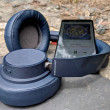Review: Samsung Galaxy Note II for T-Mobile USA
Oct 24, 2012, 8:59 AM by Eric M. Zeman
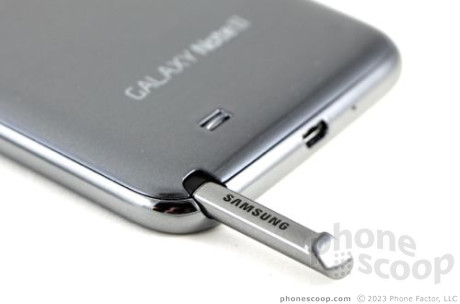
The Galaxy Note II proves that sometimes the sequel surpasses the original. The Note II, with its larger screen, faster processor, and much-improved camera, is a real contender for king of the phablets.
Form
Updated 9AM October 25. Apologies to our readers. Due to a mix-up at Samsung, our initial tests of the T-Mobile version were with pre-release software that did not perform well. We have since received final software, re-tested, and re-written the relevant parts of this review (notably, signal and browser tests.) In a nutshell, the issues we saw initially were resolved. This updated review is therefore more positive than the first version we published.
Is It Your Type?
The Samsung Galaxy Note II is a dramatic improvement of the Korean gear-maker's 2011 phablet. It is better in just about every way. It's also just about the biggest darned phone you can buy, with a massive screen and massive footprint to boot. If you subscribe to the "bigger is better" mantra, then the Note II could be the phone you're looking for.
Body
In redesigning the Galaxy Note, Samsung borrowed heavily from the design of its own Galaxy S III smartphone. The Note II uses the same design language and materials as the GSIII, only it's bigger. Putting the two side-by-side, the family resemblance is unmistakable. The Note II is the GSIII on steroids.
I've used the Galaxy Note II for almost a week, and it got a lot of attention everywhere I took it. There's no question the size makes it stand out. One friend of mine, who was using an iPhone 3GS, looked at it and said, "What, are you trying to give me smartphone envy?" Another friend of mine said, "Wow, what is that, a mini tablet?" Yeah, with a 5.5-inch screen, you can say that.
The Note II has clean lines, a straight-forward design that features curves instead of edges, and still manages to look sleek despite its giganto-phone proportions. The materials are mostly plastic and glass. I really wish Samsung would step up the quality of its materials across the board. The plastics are strong, but still come off as the cheap design option when you look at what HTC, Nokia, LG, and Apple are doing with materials these days. The glass surface of the display feels good under the thumb, but I'm not a fan of the thin battery cover.
One important change Samsung made with the Note II when compared to the original Note was to reduce the width. The Note II's screen — and hence the entire phone — is thinner. We're talking about a half a centimeter here, which may not sound like a lot, but it has a huge impact. The narrower profile makes the Note II much easier to hold in your hand. It's still impossible to wrap your fingers all the way around it, but believe me when I say the reduced width goes a long way to improving the daily usability of this phone.
The smooth surfaces are slick and glossy. Both the front and back are prone to collecting smudges and finger oils. It looks pretty gunky after using it for a few moments. However, the slippery surfaces mean the Note II glides into your pocket with ease. If it fits, that is. I tried carting the Note II around in several different pairs of jeans. It barely fit into one pair. No matter which pair of jeans I had on, the Note II's profile was easily visible on my leg. I always knew the phone was there, it's just too big and heavy not to notice.
The Note II uses a physical button for accessing the home screen. Its about an inch long and elyptical in shape. It has good travel and feedback. The back and menu keys are capacitive buttons to either side of the home button. There's no multitasking button, but if you press and hold the home button the multitasking panel will open.
The volume toggle is on the left edge. It feels cheap and produces a "clacky" sound when pressed that I found unappealing. The same goes for the lock button on the right edge. The microUSB port is on the bottom and the headphone jack is on top.
The battery cover can be peeled off in typical Samsung fashion by digging your thumbnail into a little slot. The 3100mAh battery itself can be removed if you so choose. The microSIM card can't be yanked unless you first yank the battery. The microSD card, however, can be hot swapped without pulling the battery.
The S Pen is buried in the bottom of the Note II. It's quite simple to retrieve or insert. The Note II offers haptic vibration when the S Pen is removed from or stored in the Note II. The vibrations are meant to make the owner aware that the Pen has is or isn't where it ought to be.
Performance
Screen
The screen measures 5.5-inches across the diagonal, compared to the original's 5.3-inches. It actually lost pixels. Where the original had 1280 x 800 pixels, the Note II has 1280 x 720. The aspect ratio has changed to something closer to 16:9. Overall, it's a good display, differences aside. It is as bright and colorful as any Super AMOLED display produced by Samsung. With such a large area to fill, pixels are certainly visible from a close distance (six inches or so), but you have to look hard to see them. It's not as sharp as the GSIII's display, which packs the same number of pixels into a 4.8-inch space. But it's a nice huge canvas on which to interact with your content.
Signal
The Note II did well on T-Mobile's network. It was consistent at connecting to T-Mobile's HSPA+ network and didn't have any problems finding T-Mobile's speedy data network. In fact, the Note II worked perfectly at the crowded launch party Samsung held for the device in New York City, despite the cavernous building filled with hundreds of revelers. I connected phone calls on the first dial, and the Note II didn't drop any calls even though the cell was surely jammed with users. When tested in NJ, it showed strong performance and never dropped to EDGE.
We briefly tested an AT&T variant of the Note II, and based on our limited time with it, saw no network connectivity problems. It was fast on AT&T's HSPA+ network and lightning quick on AT&T's LTE network.
Sound
The Note II is an acceptable voice phone, but falls well short of being good if you don't take care to adjust the phone app's settings. Out of the box, phone calls were inconsistent in quality, with about half demonstrating static, clipping, or cut-outs. Even the calls that were crystal clear were hard to hear thanks to the quiet earpiece. It's OK for quiet environments, but the parents cheering at a local soccer game easily drowned out my conversations on the Note II. The speakerphone is loud enough, but just barely. It has the same quality issues that the earpiece does. Ringtones, alerts, and other noises are audible if you're fairly close by, but I was unable to hear calls when walking around the mall on Saturday afternoon. Using the vibrate alert can help alleviate that issue, though, as it is nice and strong.
However, many of these issues can be resolved if you tweak the phone's settings. For example, you can set the Note II to ring louder when it senses it is in a pocket or purse. It uses the light/proximity sensors and can ring at an elevated volume (above and beyond the max volume setting in normal mode). The tools also allow you to switch noise cancellation on/off. I found it performed better with noise cancellation set to On (default is set to Off). Messing with these settings has a dramatic impact on the quality of phone calls, so be sure to check them out.
The AT&T variant had noticeably better phone call quality without requiring that we dig through the phone app settings. Volume was also much improved over the T-Mobile version.
Battery
The Note II has a 3100mAh battery. Even with the large display and constant use, the Note II easily lasted a day and a half on a single charge. I pushed it to the max over the weekend on Friday and Saturday and still had plenty of power left come Sunday morning. The battery is simply huge, and it provides plenty of power for the Note II. One thing worth noting: the Note II takes a long time to charge. It takes longer than devices with, say, 2000 - 2200mAh batteries. It requires a solid four or five hours to go from 10% to 100% charge. If you charge it every night, you'll have plenty of power to get you through your day.
Basics
Menus
The Note II runs Android 4.1 Jelly Bean, but you wouldn't know it thanks to the heavy TouchWiz user interface skin from Samsung. In practical terms, the Note II's user interface is identical to that of the Galaxy S III.
The lock screen, which can be unlocked by swiping in any direction, offers five customizable shortcuts. By default, those are to the phone, messaging app, Google search, email, and camera. Just touch the app you want to open, swipe it, and you'll go directly there. The notification bar is visible from the lock screen, so you know if you've got unread emails, messages, and other items waiting, and you can access notifications from the lock screen.
The Note II has five active home screens which can be packed with widgets, apps, shortcuts, contacts, and so on. The main app menu is a customizable set of grids. Apps can be deleted, hidden, shared, and so on. The grid holds five apps across and five apps down, making for a total of 25 on each page. It's a lot of apps to pack onto a single page. Thankfully, it is easy to make folders and store apps within to reduce the clutter in the app menu.
The drop-down notification shade has become a critical part of the UI. Not only does it allow you to triage your various missed calls, messages, and other notifications, it also allows you to toggle on/off all the radios and access the full settings menu. It also shows you how many voice minutes you've used, how many messages you've sent, and how much data you've consumed for the current billing period. That's cool — and specific to the T-Mobile variant. This feature isn't present on the AT&T model.
In terms of customization, there is plenty you can do to make the Note II yours. It has an "Easy Mode" and "Basic Mode" that let new smartphone owners ease their way into the Note II. The difference between the two modes is how the home screen panels are arranged and what widgets are placed on them. Of course, you can always adjust wallpapers, ringtones, alert sounds, and so on.
Performance of the Note II was fantastic across the board. Thanks to the speedy Exynos quad-core processor, the device had plenty of oomph for powering the various applications on the Note II's large screen. I didn't see any stuttering, lagging, or slow-downs of any kind. All of the applications I used opened in a blink and operated without issue. The newer-generation Exynos processor in the Note II easily outclasses the model in the original Galaxy Note (released late 2011). It's among the fastest processor's we've reviewed at Phone Scoop.
It worked just as well on the T-Mobile variant of the device as it did on the Sprint version — which is exactly what we expect.
Calls/Contacts
The phone app itself is more or less the stock version of the Android dialer. It's got a huge software dialpad, with tabs that run across the top for accessing the call history and contact groupings.
As with the GSIII, the Note II has an incredible array of options for the phone app. They are buried in the phone's settings tool. For example, you can turn on/off noise cancellation, as well as dial in your own preferences for volume, clarity, and warmth. Using these tools significantly improves in-call performance and boosts the device into "excellent" territory.
The contact app behaves more or less like the stock Android contact app. Features I liked include the different widgets for controlling and connecting with your contacts. For example, you can set a direct access shortcut on the home screen that includes the contact's most recent social network status update. There are also two different home screen widgets that collect your favorite contacts in one place on the home screen. The only difference is the size of the widget.
Messaging
As expected, the Note II offers the stock Gmail, email, SMS/MMS, Google Talk, Google+, and Google+ Messenger apps. Together with their associated widgets, they make an impressive arsenal for reaching out to and connecting with your friends, family, and colleagues.
The Note II also includes ChatON, Samsung's instant/text messaging application. Rather than send messages via SMS, it sends IMs as network data. ChatON natively syncs with your Google Talk contacts and the user interface is plain and simple enough to use. ChatON is a cross-platform application, meaning it will work on Android devices as well as iOS, Bada, BlackBerry, and Windows Phone.
On the social networking front, the native Twitter and Facebook apps are of course present, though Samsung's Social Hub is nowhere to be found.
The AT&T version includes a catch-all Instant Messaging app that supports AIM, Windows Live, and Yahoo Messenger.
Extras
Media
The Note II stays in familiar territory when it comes to media consumption. The bare-bones music and video playback apps are on board and can be used with most sideloaded content. The Note II is also loaded with the the Google Play Store and associated apps for music, video, books, magazines, and apps. They all work well. Music, in particular sounded very good through my favorite headphones, and video looks fantastic on the Note II's huge display.
The Note II also comes with Samsung's Media Hub and Music Hub. The Media Hub is an alternative place through which to purchase and/or rent movies and television shows. It works fine, but requires a Samsung user account. The same goes for the Music Hub for making music purchases. Neither has the breadth of content that the Google Play Store does.
Camera
The Note II includes an 8-megapixel shooter. It does not have a dedicated camera button, but the camera can be launched via the lock screen shortcut. It loads quickly.
The layout of the camera controls is typical for a Samsung smartphone. There is a control strip down each side; the viewfinder is positioned between them. The settings strip - which is fully customizable - offers access to features such as the flash, exposure controls, scenes, shooting modes, and so on.
Once you've spent a moment familiarizing yourself with the controls and perhaps even customized them to your own liking, the camera is a breeze to use. It focuses and shoots photos quickly. You can choose to use touch-to-focus if there is something in particular you want to be in focus. It's also kind of awesome having such a large screen to use as the viewfinder.
Photos
The images I captured with the Note II were quite good. On a sunny Saturday afternoon, I was able to get some great shots of my eldest daughter playing soccer. There is a bright orange tree in the photos that just pops with color.
For the most part, images were sharp, colorful, and well exposed. Otherwise, I was pleased with the results. It certainly captures photos worth sharing via your favorite social networks.
Video
Video also looks great. Some of the samples from Saturday's soccer game attest to how well the Note II does. Video was rich with color, properly exposed, and in focus. It even worked well in really low-light situations, such as the Halloween party that I attended over the weekend. My guess is you'll be pleased with the results, too.
Gallery
The Note II's gallery application is very close to the stock Android 4.0 gallery app. The basic view includes a mish-mash of photos from all your accounts in one epically huge grid. Using the tools at the top of the page, you can shift the view to specific folders or collections of photos (camera roll, Google+, Flickr, etc).
The Note II has the same photo-editing features that most Android 4.0 smartphones do. Images can be cropped and rotated easily. Also, more intensive edits (straightening the image, killing red-eye, correcting exposure/color) are handled by the Samsung-enhanced gallery app, as well. The gallery app lets users share images quickly and easily via dozens of avenues.
Apps
The Note II comes with a typical mix of Google, Samsung, and T-Mobile apps. Stand-outs include Flipboard and Paper Artist (a really cool scribbling app that takes advantage of the S Pen). You can't delete most of the pre-installed apps, but you can at least hide those you don't use. Either way, there's plenty of on-board storage for your own apps.
Bluetooth
The Note II's Bluetooth radio worked flawlessly. It paired and connected with every device I have sitting on my desk. Phone calls did not sound that good when routed through a headset, nor did music sound all that good when played back through stereo headphones.
Browser
The Note II ships with the age-old Android browser. The application itself is fine for browsing the web and does a good job of rendering web sites. The Note II worked very well on T-Mobile's cellular network. On HSPA+, loading web sites was quick and painless. It even managed to deliver solid performance in a room full of Samsung party-goers.
The web browser performed just fine on the AT&T version, even over AT&T's 3G network. No problems there at all.
Clock
There's a white digital clock on the lock screen. It is big enough to be seen at an arm's length. I wish it were customizable in the way that LG's recent smartphones are, but it is stuck as-is. There are a multitude of clock widgets available for the home screen.
GPS
The T-Mobile Note II has but Google Maps for navigation. The GPS radio worked really well. It pinpointed me quickly, though accuracy varied between 25 and about 500 feet. I didn't have any trouble routing directions between points, though.
S Pen
The Note II comes with all the same "S" apps that were on the GSIII, as well as a number of new features for the S Pen stylus.
The S Pen itself is improved. Not only is it thicker, it has a "right click" button for activating secondary features on the screen, such as menus. It slips into the Note II's bottom edge easily, and offers haptic feedback when removed or put back. The thicker profile of the S Pen makes it easier to hold and use.
The S Pen now also has an on-screen pointer of sorts. When you hover with the S Pen about one centimeter above the Note II's display, a tiny pointer appears on the screen. The pointer gives you an approximate idea of where the S Pen will land if you tap. The cool thing, however, is that the secondary action buttons works even when hovering. So, for example, you can hover over an app, press the button on the S Pen, and open a settings menu or similar.
The one thing I think is insanely dumb is that the S Pen can't interact with the Back and Menu buttons on the phone itself. These capacitive buttons aren't part of the display, but it feels intuitive to use the S Pen to tap the Back button when you're browsing the device. It won't work. You have to use your finger.
S Note
The S Note app really is useful if you're not averse to using the stylus. It is a full-fledged creative app that can be used to create all sorts of documents, including memos, letters, newsletters, cards, and many others. It offers some really cool tools, such as recognizing mathematical formulas, or shapes. For example, if you draw a circle, the S Note software will automatically clean it up and make it a true circle instead of your scrawled, uneven rendering. There are plenty of templates that make creating new documents a snap, and inserting text, images, and other content from other parts of the Note II is a breeze.
Notes can be multiple pages long, and S Note includes handwriting recognition software as well as access to the Swype keyboard. You can import clip art, or maps, you can skip the pen and keyboard entirely and dictate notes, and of course you can send the notes to others via email, social networks, etc.
S Voice
Like Apple's Siri, S Voice on the Note II is a voice-controlled assistant. Double tap the home key and S Voice launches, asking you what you want help with. You can search for contacts, dictate SMS messages, check the weather, see alarms, and so on. It definitely has limitations. You can't use it to start and address an email, for example, but you can dictate the text therein. You can have it start the media player, but not open the camera and take a picture.
AllShare
The AllShare app allows one user to share their content with a group of other Note II (or GSIII) users. For example, say I choose to share a photo album with you. Not only can you see it on your device (this is all accomplished over Wi-Fi, by the way), but you can interact with it. Other participants can swipe through the gallery, which is cached locally on the participants' devices, as well as write notes on the images or other content being shared. It's pretty neat.
TecTiles
The Note II also works with Samsung's TecTiles. TecTiles are programmable NFC stickers that will interact with the Note II. Using a separate app, Note II owners can set up each tag to perform one of about a score of actions. For example, use one at work to turn on the Wi-Fi radio and automatically connect to your corporate network. Or use one to initiate a phone call to your significant other when you get home. Programming the TecTiles is a cinch. Samsung is selling the stickers in packs of 5 for $15.
Wrap-Up
The Samsung Galaxy Note II is a big, big phone in more ways than one. True, it is one of the largest handsets you can buy, but the new dimensions make it an easier device to use day in and day out. Unlike the original, I found I was used to the size after a few days. It is still difficult to use one-handed, however, and for some that might be a deal breaker.
It performed well on T-Mobile's network, with data speeds that were on par with other T-Mobile HSPA+ hardware. The software and tools are robust, the media powers second-to-few, the camera and video camera excellent, and the cool features of the S Pen and its associated software are much improved over the original Note. The entire package is powered capably by the speedy Exynos processor and managed well by Samsung's TouchWiz user interface.
For the consumer seeking to merge their smartphone and tablet into one device, the Note II is certainly the first device to get the formula (mostly) right.
Comments
No messages


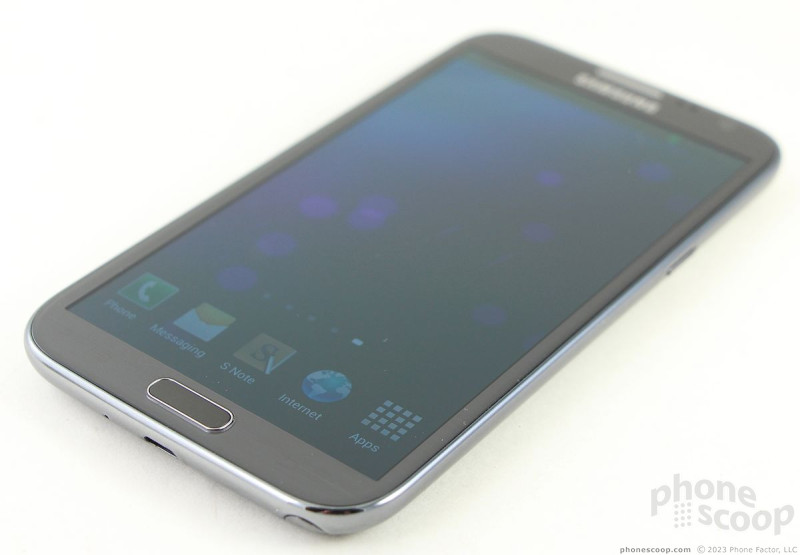
































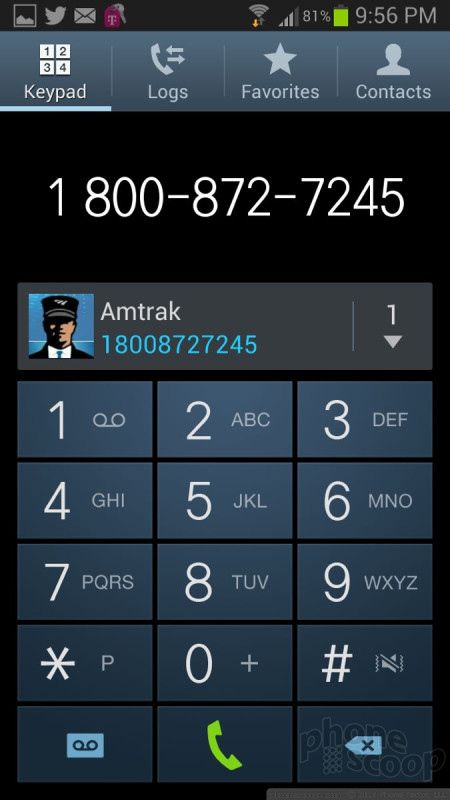












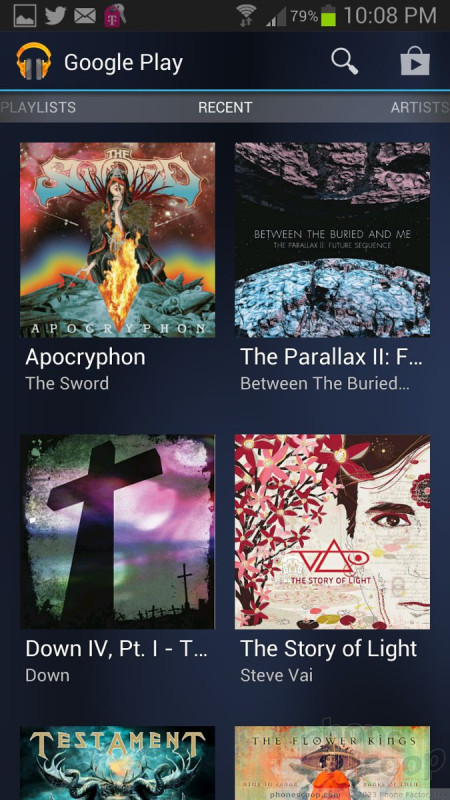









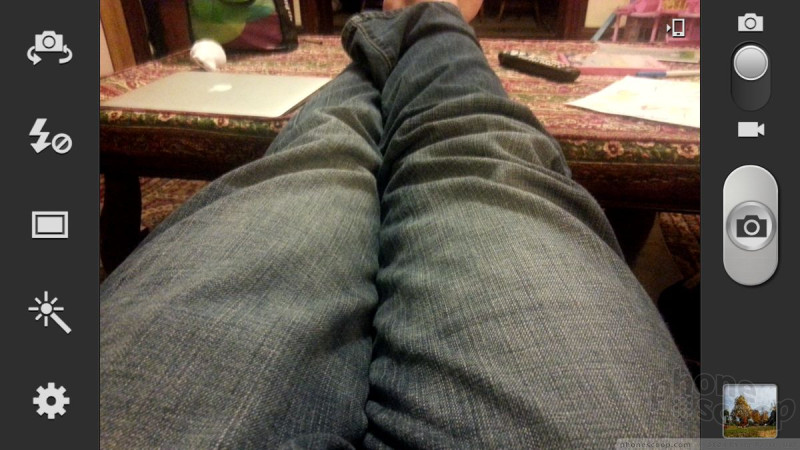




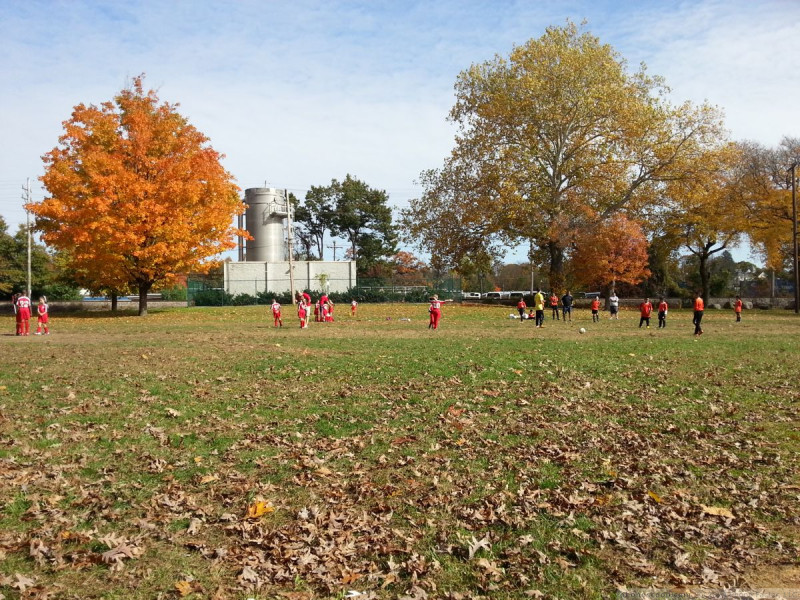












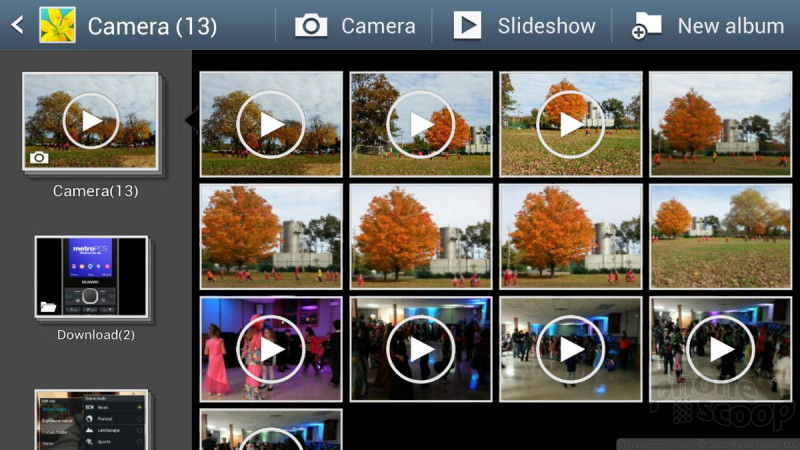









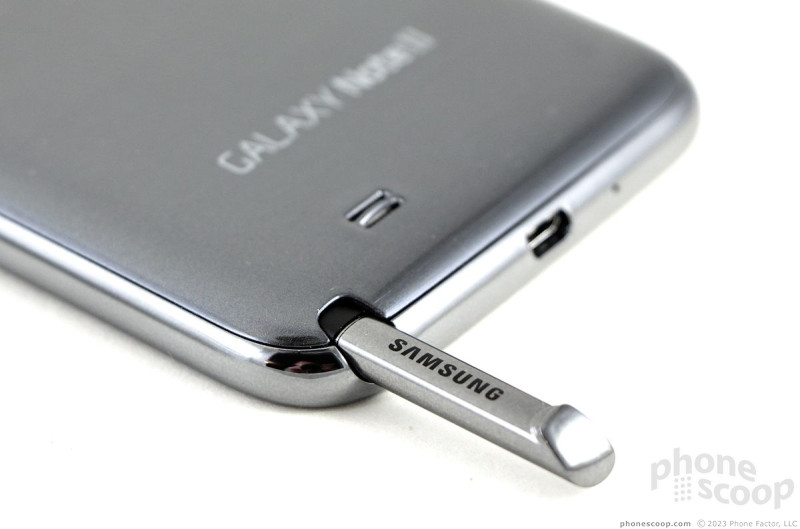


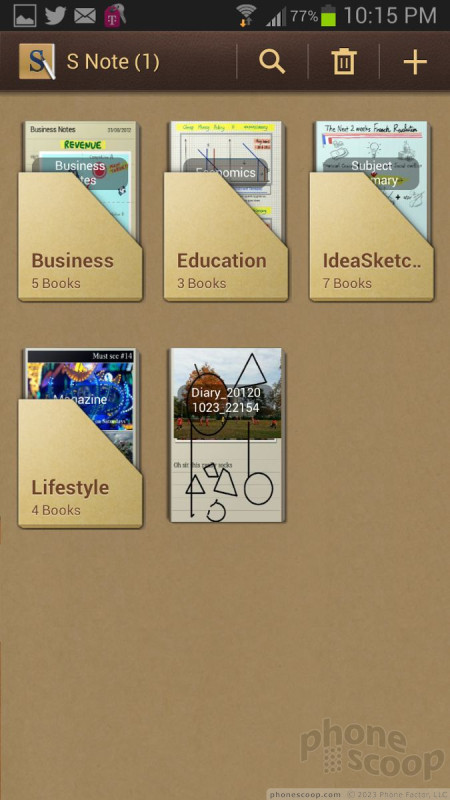








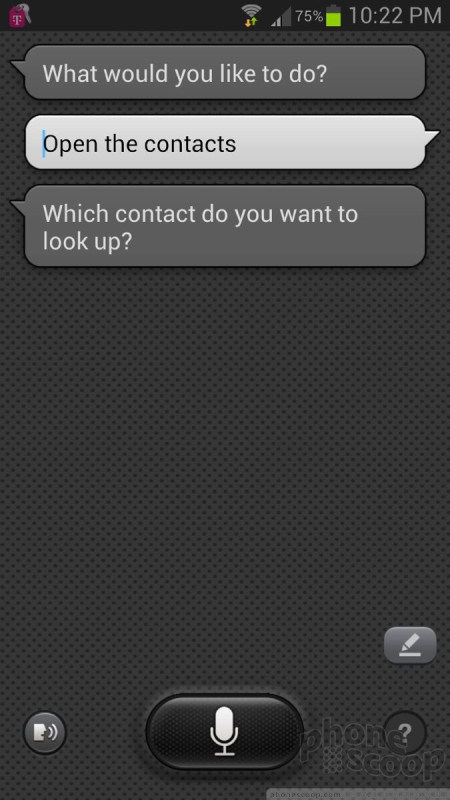


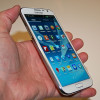 Hands-On: Samsung Galaxy Note II
Hands-On: Samsung Galaxy Note II
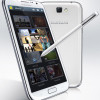 Samsung Reveals Galaxy Note 2, Plans U.S. Version
Samsung Reveals Galaxy Note 2, Plans U.S. Version
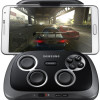 Samsung Debuts GamePad for Android Phones
Samsung Debuts GamePad for Android Phones
 Facebook Home and Updated Messenger Hit Android
Facebook Home and Updated Messenger Hit Android
 Samsung Galaxy Note II (GSM)
Samsung Galaxy Note II (GSM)


